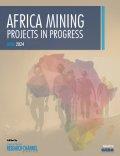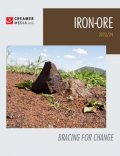|
SELECT a_id, a_id_word, a_headline, a_publish_date, a_abstract, a_author, a_has_video, a_has_audio FROM su_cat_sg_mappings, re_categories , re_category_sections_assoc , pr_sections , pr_article_section_assoc , pr_articles_search, pr_article_media_assoc WHERE csg_sg_id = 1 AND csg_cat_id = cat_id AND a_status = 1
AND a_process_status = 4 AND a_expiry_date >= 1713439800
AND cat_id = scat_cat_id AND scat_s_id = s_id AND s_id = ase_s_id AND ase_a_id = a_id
AND cat_re_id = 42 AND ama_a_id = a_id AND ama_mt_id = 2 AND ama_p_id = ase_p_id AND s_id NOT IN (14903,14910,14911,14906,14904,14912,14909,14908,14907,14905) AND a_publish_date <= 1713439800 AND ase_s_id IN (14889,14891,14892,14893,14894,14895,15673,14896,14897,14898,14899,14900) GROUP BY a_id ORDER BY a_publish_date DESC LIMIT 0, 100
|
 |
Pumps – Midyear Brief 2022
 Published: 15 Jul 22
Creamer Media’s Real Economy Year Book has been divided into separate reports under the banner Midyear Briefs, and investigates key developments in the automotive, construction, electricity, petrochemicals, oil and gas, road, rail and ports, steel, manufacturing, water, pumps, coal, gold, iron-ore and platinum sectors. This five-page brief is a synopsis of key developments in the pumps sector over the past 12 months. The brief considers the growth drivers in the pumps sector, the adoption of the Industrial Internet of Things, mergers and acquisitions in the sector, as well as how supply chain disruptions affect the sector.
|
|
 |
Petrochemicals, oil and gas – Midyear Brief 2022
 Published: 15 Jul 22
Creamer Media’s Real Economy Year Book has been divided into separate reports under the banner Midyear Briefs, and investigates key developments in the automotive, construction, electricity, petrochemicals, oil and gas, road, rail and ports, steel, water, manufacturing, pumps, coal, gold, iron-ore and platinum sectors. This six-page brief is a synopsis of key developments in the oil and gas sector over the past 12 months. The brief considers South Africa’s ageing crude oil refineries, the country’s transition to a hydrogen economy and the potential that sustainable aviation fuel offers the economy.
|
|
 |
Construction 2022: Banking on Infrastructure
 Published: 27 Jun 22
Creamer Media’s ‘Construction 2022: Banking on Infrastructure’ report examines South Africa’s construction industry, its key participants, its proposed infrastructure-based economic recovery and the impact of corruption on the sector.
|
|
 |
Energy Transition Report 2022
 Published: 29 Apr 22
Creamer Media’s ‘2022 Energy Transition Report’ examines South Africa’s electricity sector and provides insights into the status of State-owned power utility Eskom, independent power producers, transmission and distribution, as well as changes to the legislative and regulatory framework. The report also delves into the future of green hydrogen and South Africa’s path to a Just Energy Transition.
|
|
 |
Real Economy Yearbook 2022
Published: 01 Mar 22
The world and South Africa seem to be lurching from one crisis to the next.
This time last year, governments and businesses globally and locally were preoccupied with finding ways of recovering from the deadly Covid-19 pandemic, as well as the associated lockdowns, which had seriously disrupted production, supply chains and economic activity.
While the virus remains a threat and more lockdowns have been implemented in China this year, countries are finding ways of living with the virus, the potency of which has also, thankfully, weakened as new variants have emerged and communities gained natural and vaccine-induced resilience. It is urgent, however, that further momentum is built – and fast – so that these green shoots do not get trampled on before bearing fruit.
Creamer Media considers these events and the ramifications thereof in its Real Economy Yearbook 2022, in the hope that South Africa's stalled public infrastructure roll-out will provide visible evidence of progress in the months to come but also lay the foundation for future growth and job creation.
|
|
 |
Projects in Progress 2022 (First Edition)
Published: 01 Mar 22
South Africa has made investment, especially investment in infrastructure, a key priority as it desperately seeks to reignite growth and spur employment creation through the Economic Reconstruction and Recovery Plan.
It is one thing prioritising investment, but quite another making it happen, particularly given global and domestic headwinds.
Globally, the ongoing pandemic, rising inflation, an intensifying climate crisis and a growing number of conflicts, epitomised by, but definitely not limited to, Russia’s invasion of Ukraine, are all undermining the allocation of capital to developing economies.
Domestically, the microeconomic reforms that are viewed as so crucial to unblocking investment in energy, logistics and digital infrastructure are either progressing too slowly or experiencing growing pains.
On all these fronts, South Africa is currently lacking, which is why partnerships are now so crucial between government and business.
To lay the foundations for far higher levels of economic growth, government needs to enter into a true collaboration with the private sector and civil society to realise infrastructure delivery.
In such an environment, government should use its policy muscle to leverage those fixed investment areas, such as green energy, which will have the biggest economic-, employment- and climate-resiliency multipliers, while ensuring that the guardrails are in place to prevent corruption and abuse of dominance.
It is a partnership that can begin with pockets of excellence, such as unlocking new distributed power generation by miners, before being progressively expanded to other crucial areas, including water, sanitation, roads, bridges, rail, housing, and broadband infrastructure.
It is time to beat the backlog together.
|
|
 |
Road, Rail and Ports 2021/22: Towards more private-sector participation
 Published: 10 Dec 21
South Africa had, in times past, by far the best transport infrastructure in Africa; however, declining road conditions, and freight and passenger rail, as well as port capacity shortages and inefficiencies, are now all proving to be a constraint on trade and economic growth.
After contributing substantially to the country’s formative development, the rail sector has shown a downward trend for several decades, with a lack of adequate investment, poor management and theft and vandalism all impacting on performance.
Meanwhile, the country’s major road corridors are, as a consequence, overly congested, and subjected to overloading, contributing to South Africa’s carbon emissions.
The performance of its ports has also declined, compared with other ports on the continent and worldwide, with a recent World Bank analysis highlighting South Africa’s container ports as among the worst performers globally. Government plans to tackle the constraints are in the early stages. Creamer Media's ‘Road, Rail and Ports 2021/22: Towards more private-sector participation’ provides an overview of South Africa’s ongoing investment in road, rail and ports infrastructure, with a particular focus on the size and state of this infrastructure, and the funding and maintenance of these respective networks, as well as the challenges these sectors are facing.
|
Road, Rail and Ports 2021/22: Towards more private-sector participation
|
 |
Telecommunications 2021: A changing landscape
 Published: 02 Dec 21
The Covid-19 pandemic has highlighted the critical importance of the telecommunications industry, as the world relied on connected services to keep economies operating during intermittent lockdowns and restrictions throughout 2020 and 2021.
Connectivity has become as essential as electricity and water, and some industry proponents argue that connectivity should be a basic human right, as Covid-19-related restrictions reveal a digital divide in access to universal and affordable connectivity services.
South Africa’s own telecommunications industry has proven a critical enabler of connectivity on an unprecedented scale: it kept businesses operating by enabling employees to work from home, connected families that were separated, enabled home-schooling for students and facilitated the continuity of daily life as people turned to their computers and smartphones to substitute their in-person activities online.
The Independent Communications Authority of South Africa believes that some of this newly developed reliance may continue in the “new normal” or at least until the emergence of a long-term solution, such as universally adopted vaccines, making ongoing access to reliable digital infrastructure for telework, telemedicine, food delivery and logistics, online and contactless payments, remote learning and entertainment all the more urgent.
Creamer Media’s ‘Telecommunications 2021: A changing landscape’ report considers the evolution of South Africa’s telecommunications market, the companies operating in it, the new technologies they are adopting, as well as the challenges they are facing, such as spectrum and data costs, in this constantly evolving landscape.
|
|
 |
Energy Roundup – November 2021
 Published: 10 Nov 21
Creamer Media's Energy Roundup is a monthly report providing a synopsis of energy-related news from South Africa.
The November 2021 roundup covers activities in October 2021 and includes details of State-owned electricity utility Eskom’s reliability maintenance recovery programme; Eskom’s joint venture with coal miners Exxaro and Seriti Resources to develop renewable-energy projects; and the growing constraints on South Africa’s power grid, which could precipitate a crisis similar to the one experienced in 2008.
|
|
 |
COP26: Advancing South Africa’s just energy transition
 Published: 17 Oct 21
The Paris Agreement, which is a legally binding international treaty on climate change, outlines ambitious goals of limiting global warming to below 2 °C above preindustrial era levels while pursuing efforts to limit the increase to 1.5 °C by reducing carbon dioxide emissions worldwide.
Some countries have been raising their commitments as intended, with ambitious objectives set by the European Union (EU), the UK and Japan, besides others.
Nonetheless, the world is likely on course to warm by about 2.5 °C by the end of the century, according to research and consultancy group Wood Mackenzie.
Many countries are not on track for net zero by 2050 and governments still have much work to do to clarify their strategies for reaching their respective objectives.
South Africa’s Presidential Climate Change Coordinating Commission has published recommendations for a carbon-reduction commitment and has confirmed a long-term target for achieving net-zero carbon emissions by this date.
Yet, South Africa is unlikely to reach the net-zero emissions target by 2050. Its economy – and energy system – is one of the most coal-dependent in the world and government’s plans still allow for a significant amount of coal in the future power mix. This is despite the country’s complementary wind and solar resources being among the best renewable-energy resources in the world, available on vast amounts tracts of unused land.
Creamer Media’s ‘COP26: Advancing South Africa’s just energy transition’ considers the challenges that the world and, in particular, South Africa are facing with regard to reaching their climate-change mitigation goals. The report considers South Africa’s Nationally Determined Contribution; the country’s reliance on coal and the its converse potential it has as a preferred global destination for foreign and domestic decarbonisation investment while ensuring a just transition; South Africa’s renewables capability; and the consequences of delaying climate action.
|
|
|
|
 Buy Report
Hydrogen 2024: Implementation crucial going forward
Buy Report
Buy Report
Hydrogen 2024: Implementation crucial going forward
Buy Report
 Buy Report
Roads, Rail & Ports 2024: Inefficiencies reach new lows
Buy Report
Buy Report
Roads, Rail & Ports 2024: Inefficiencies reach new lows
Buy Report
 Buy Report
Africa Mining Projects in Progress 2024
Buy Report
Buy Report
Africa Mining Projects in Progress 2024
Buy Report
 Buy Report
Iron-Ore 2023/24: Bracing for change
Buy Report
Buy Report
Iron-Ore 2023/24: Bracing for change
Buy Report
 Buy Report
Platinum Group Metals 2023: Crucial Element in the Energy Transition
Buy Report
Buy Report
Platinum Group Metals 2023: Crucial Element in the Energy Transition
Buy Report
 Buy Report
Automotive 2023: Navigating change
Buy Report
Buy Report
Automotive 2023: Navigating change
Buy Report
 Koruson 2, South Africa
Published: 12 Apr 24
Koruson 2, South Africa
Published: 12 Apr 24
 Saldanha green hydrogen project, South Africa
Published: 12 Apr 24
Saldanha green hydrogen project, South Africa
Published: 12 Apr 24
 Amun green hydrogen project, Morocco
Published: 12 Apr 24
Amun green hydrogen project, Morocco
Published: 12 Apr 24
 Saudi Arabia is moving closer to a potential deal to acquire a minority stake in a Pakistan mine controlled by Barrick Gold, people with knowledge...
Challenger secures another A$4m share placement
Published: 18 Apr 24
ASX-listed Challenger Gold has placed an additional A$4-million to a single investor at 8.5c a share for an one-for-one option exercisable at 14c a...
Spartan raises A$80m for Dalgaranga
Published: 18 Apr 24
Saudi Arabia is moving closer to a potential deal to acquire a minority stake in a Pakistan mine controlled by Barrick Gold, people with knowledge...
Challenger secures another A$4m share placement
Published: 18 Apr 24
ASX-listed Challenger Gold has placed an additional A$4-million to a single investor at 8.5c a share for an one-for-one option exercisable at 14c a...
Spartan raises A$80m for Dalgaranga
Published: 18 Apr 24
 ASX-listed Spartan Resources on Thursday unveiled an A$80-million fully underwritten equity raising to accelerate exploration and development of...
ASX-listed Spartan Resources on Thursday unveiled an A$80-million fully underwritten equity raising to accelerate exploration and development of...
 Saudi Arabia is moving closer to a potential deal to acquire a minority stake in a Pakistan mine controlled by Barrick Gold, people with knowledge...
Challenger secures another A$4m share placement
Published: 18 Apr 24
ASX-listed Challenger Gold has placed an additional A$4-million to a single investor at 8.5c a share for an one-for-one option exercisable at 14c a...
Spartan raises A$80m for Dalgaranga
Published: 18 Apr 24
Saudi Arabia is moving closer to a potential deal to acquire a minority stake in a Pakistan mine controlled by Barrick Gold, people with knowledge...
Challenger secures another A$4m share placement
Published: 18 Apr 24
ASX-listed Challenger Gold has placed an additional A$4-million to a single investor at 8.5c a share for an one-for-one option exercisable at 14c a...
Spartan raises A$80m for Dalgaranga
Published: 18 Apr 24
 ASX-listed Spartan Resources on Thursday unveiled an A$80-million fully underwritten equity raising to accelerate exploration and development of...
ASX-listed Spartan Resources on Thursday unveiled an A$80-million fully underwritten equity raising to accelerate exploration and development of...
















